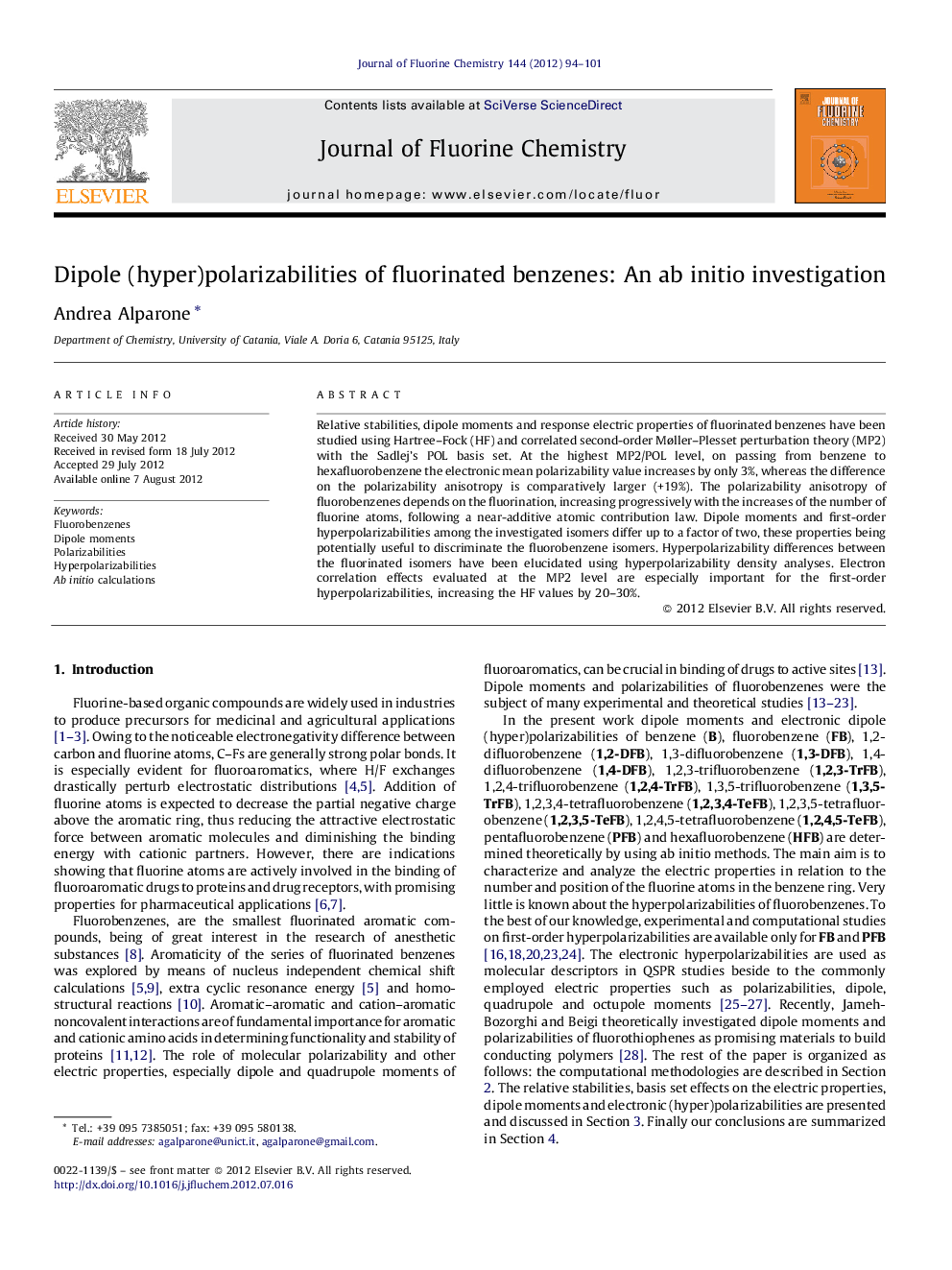| Article ID | Journal | Published Year | Pages | File Type |
|---|---|---|---|---|
| 1313698 | Journal of Fluorine Chemistry | 2012 | 8 Pages |
Relative stabilities, dipole moments and response electric properties of fluorinated benzenes have been studied using Hartree–Fock (HF) and correlated second-order Møller–Plesset perturbation theory (MP2) with the Sadlej's POL basis set. At the highest MP2/POL level, on passing from benzene to hexafluorobenzene the electronic mean polarizability value increases by only 3%, whereas the difference on the polarizability anisotropy is comparatively larger (+19%). The polarizability anisotropy of fluorobenzenes depends on the fluorination, increasing progressively with the increases of the number of fluorine atoms, following a near-additive atomic contribution law. Dipole moments and first-order hyperpolarizabilities among the investigated isomers differ up to a factor of two, these properties being potentially useful to discriminate the fluorobenzene isomers. Hyperpolarizability differences between the fluorinated isomers have been elucidated using hyperpolarizability density analyses. Electron correlation effects evaluated at the MP2 level are especially important for the first-order hyperpolarizabilities, increasing the HF values by 20–30%.
Graphical abstractDependence of the static electronic polarizability anisotropy as a function of the number of fluorine atoms of fluorobenzenes.Figure optionsDownload full-size imageDownload as PowerPoint slideHighlights► We computed dipole moments and (hyper)polarizabilities of fluorobenzenes. ► Polarizability anisotropy is linearly related to the number of fluorine atoms. ► Hyperpolarizability differences among isomers are elucidated using density analyses.
